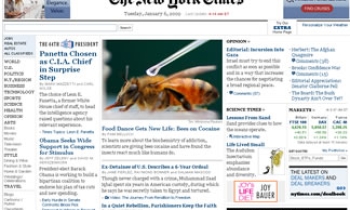When did magazine articles degenerate into lists? After perusing September's cover stories, I'm plagued by this question.
Conde Nast Traveler's cover teases 50 top travel films. Shape wants to firm me up and feed my sweet tooth with three easy workouts and 48 best beauty goodies. Budget Travel touts 40 best getaways and places where 33 experts eat cheap. The Wine Spectator tops that with an issue devoted to 3,000 restaurants. Travel & Leisure's September cover promotes 125 dream trips, 30 affordable European urban hotels, and 18 essential business travel tips.
I stopped subscribing to Outside a few years back, when I tired of their obsessive focus on extreme adventure, but that hasn't stopped them from sending me brochures featuring their covers. They're into numbers nowadays too: 48 trips of a lifetime, 24 ways to find the best of Hawaii and the inside account of how Aron Ralston sawed off his own arm, plus 10 more horrifying escape stories in case Mr. Ralston's tale isn't ghastly enough for you.
Even my alpha male magazine, GQ, has gone numeric with a cover story promising to reveal 25 secrets to improve my style. Twenty-five? Do I need that many? With so much information squeezed between the covers, I'm overwhelmed. What list do you begin with? Those 125 dream trips sound twice as good as 48 trips of a lifetime, unless, of course, the editors of Outside have done a better job at winnowing the list than Travel & Leisure. Using that criterion, maybe Budget Travel's 40 best getaways are the really discriminating list.
Life would be simpler if I had even rudimentary data-mining software. I could cross-reference 125 dream trips against 40 best getaways and 48 lifetime trips and choose only the destinations that matched all three. But then, with my luck, Hawaii would come up, and I'd have to figure out which of the 24 ways to find the best of Hawaii really is the best.
Maybe it would be a better idea to cross-reference the Wine Spectator and Budget Travel lists. Then I could see whether any of the 3,000 best restaurants for wine are also where the 33 experts eat cheap. Now, that would be useful information. Better still, I could apply this eat-cheap-at-the-best-wine-restaurants subset against the dream-trip-best getaway-lifetime-destination subset and use that list to make my travel choices.
Just thinking about all these lists gives me ennui. Whatever happened to the old-fashioned feature, a focused, in-depth piece of good writing that commands more than 20 seconds of a reader's attention at a time? It seems to me there must have been a conference of editors over the past year, where they all listened to the same presentation by some marketing guru telling them that if old media like magazines are going to survive the age of blogging they're going to have to become annotated lists.
Maybe editors and publishers think their readers have the attention span of those women in doctors' waiting rooms who snap through the pages of magazines as fast as the average male clicks through TV channels with the remote control. But it seems absurd to plan a magazine's editorial copy around the inattentive reader, just as it would be absurd to design a television show around the ADD-afflicted viewer with remote-control hyperactivity.
Then it hit me. They're trying to tell me something. Like everyone else in America, I read "The Da Vinci Code." But 125+30+18 +3000+24+33 and so on isn't a Fibonacci sequence, and anyway I'm no cryptologist. Factoring in the other variables – food, wine, shape, goodies, fashion secrets, Hawaii sweet spots – renders the hidden meaning of these magazine covers even more cryptic. Not even my numerologist could help me.
Don't get me wrong. I love magazines. I subscribe to lots of them. It gives me pleasure to read thought-provoking features. But my love of magazines is fickle. With a few exceptions, I don't stay faithful to the same ones year after year. For me, magazine monogamy means magazine monotony. So I am a serial subscriber, moving from one title to another, determined to sample as many as possible in one lifetime.
Vanity Fair is one of my keepers. I wish more editors had faith in their subscribers like Vanity Fair. It's a magazine for readers, with in-depth writing and blessedly few lists. Maybe Vanity Fair will print an expose of the sinister forces behind magazine listmania. Dan Brown could write it. Everyone loves a conspiracy.
Come to think of it, that's an idea. Note to self: Query editors on a list of history's 25 greatest conspiracies.
John B. Roberts II is an author and television producer. He ocassionally writes for The Washington Times.









